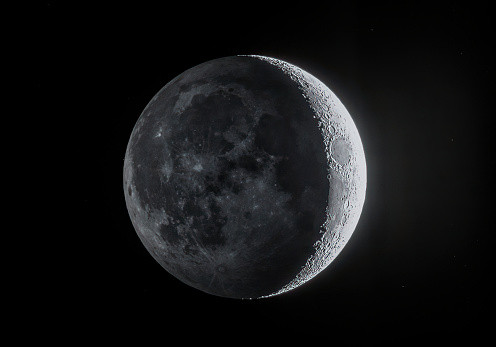
After losing touch with its Hakuto-R Mission 1 (M1) lander, the Japanese start-up ispace inc (9348.T) announced that its attempt to accomplish the first private moon landing had failed.
It concluded that the lander had likely crashed on the lunar surface.
"We lost communication, so we have to assume that we could not complete the landing on the lunar surface," founder and Chief Executive Takeshi Hakamada said on a company live stream.
After SpaceX's Starship rocket exploded spectacularly minutes after blasting off its launch pad, it was the second setback for private space development in a week.
A private firm has yet to be successful in landing on the moon.
India and a private Israeli company's attempts in recent years to soft-land a spacecraft on the moon failed, leaving just the United States, the former Soviet Union, and China with success, Reuters reported.
Shares of ispace, a company that sends rovers and other payloads to the moon and sells data about it, were not traded on Wednesday morning but were expected to decline by their daily limit. Just two weeks ago, the stock made its debut on the Tokyo Stock Exchange, and since then, its value has doubled.
Hirokazu Matsuno, the senior government spokesman for Japan, stated that despite the mission's failure, the nation wants ispace to "keep trying" because its efforts were crucial to the growth of a homegrown space sector.
Japan has seen some recent setbacks in its mission to send Japanese astronauts to the moon by the late 2020s.
The new medium-lift H3 rocket from the national space agency had to be destroyed last month when its second-stage engine failed to fire.
After launch in October, the solid-fuel Epsilon rocket also failed.
An animation based on real-time telemetry data showed the M1 lander getting as close to the lunar surface as 90 meters (295 feet) four months after its SpaceX rocket launch from Cape Canaveral, Florida, at about 12:40 p.m. Eastern time (1640 GMT Tuesday).
"Our engineers will continue to investigate the situation," Hakamada said. "At this moment, what I can tell you is we are very proud of the fact that we have already achieved many things during this Mission 1."
Mission control had lost contact with the lander by the scheduled touchdown time, and engineers could be seen worryingly watching the live broadcast as they awaited a signal that never came to establish the lander's fate.
According to him, the lander successfully achieved eight out of ten space mission goals, yielding useful information for the subsequent landing attempt in 2024.
The 2.3-meter-tall M1 started its landing phase about an hour before the scheduled touchdown, progressively narrowing its orbit around the moon from 100 km (62 miles) above the surface to about 25 km (3,700 miles), traveling at close to 6,000 km/hour (3,700 mph).
According to Chief Technology Officer Ryo Ujiie, slowing down the lander to the proper speed in opposition to the moon's gravitational pull would be like applying the brakes to a bicycle just inches from a ski jump.
The mission was intended to deploy a two-wheeled, baseball-sized rover created by the Japan Aerospace Exploration Agency, Tomy Co Ltd (7867.T), and Sony Group Corp (6758.T) at a landing spot near the edge of Mare Frigoris in the northern hemisphere of the moon. It also intended to send out Rashid, a four-wheeled rover from the United Arab Emirates.
The Niterra Co Ltd (5334.T) experimental solid-state battery was among the equipment the lander carried to test its performance on the moon.
Ispace stated it may be compensated for the mission after Mitsui Sumitomo Insurance Co, a part of the MS&AD Insurance Group (8725.T), insured it.
© 2025 Latin Times. All rights reserved. Do not reproduce without permission.




